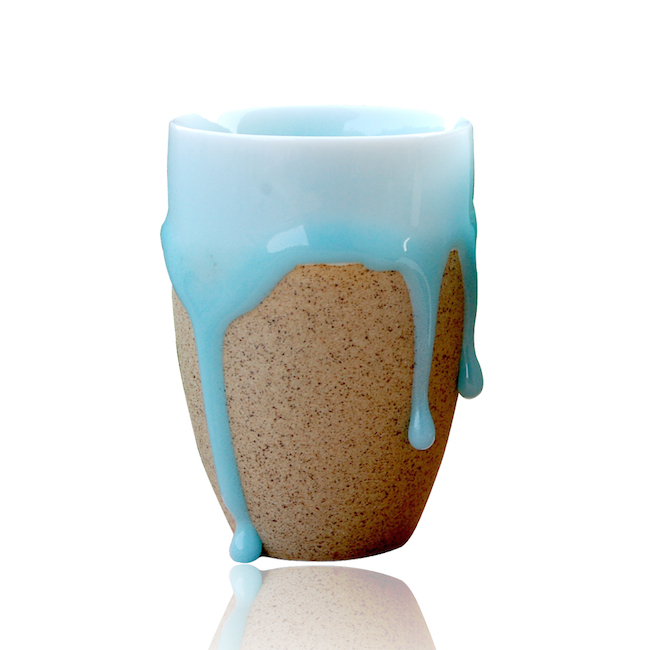We’re going to have to toss this query out to some of our more science-minded readers. We lack the training (ugh, math) to figure this one out on our own, but it’s an interesting question for those of us who wonder what our glazed ceramics will look like after a few million years.
Nanowerk posted the question recently: Is glass a true solid? The article is based on research by scientists at the University of Bristol and Kyoto University, who used computer simulations and information theory to study the state changes of glass. The article states:
“Watching a glass blower at work we can clearly see the liquid nature of hot glass. Once the glass has cooled down to room temperature though, it has become solid and we can pour wine in it or make window panes out of it.
“On a microscopic scale, solidification means that molecules have settled into a crystalline structure. And yet, when looked at under the microscope, it appears glass never settles down but keeps flowing, albeit extremely slowly – so slowly, in fact, that it would take over 10 million years for a window pane to flow perceptibly.”
The research states that the atoms in glass (even though it appears to flow when viewed under a microscope) will eventually organize into geometrical shapes in the solid-like regions of the glass. These take on shapes such as icosahedra, pictured below.

Using computer models and information theory to chart the movement of such atoms, the researchers said that glass will be a true solid… eventually.
Dr Karoline Wiesner said: “Information theory provided us with the mathematical tools to detect and quantify the movements of atoms, which turned out to move as if they were in communication with each other.”
Dr Paddy Royall added: “We found that the size of the solid regions of icosahedra would grow until eventually there would be no more liquid regions and so the glass should be a true solid.”
Our question, then, is what does this say about glaze? Both glass and glaze include silica as a fundamental component. Are our glazed vessels moving very, very slowly?
Any thoughts about this post? Share yours in the comment box below.

Glazes are a whole family of silicate and borosilicate glasses. Some glazes are almost fully crystaline while most are almost 100% glassy. The glassy transparent glaze will act like a glass. However each of the thousands of glaze formulations will have their own viscous nature. The thin coatings of glaze may be more impacted by surface chemistry than volume glass. Interesting question!
(BTW, any info on the awesome cup used as the top image?!)
Though glaze and glass share silica as a glass former, glass includes fluxes to lower the melting point of silica. Glaze contains fluxes but also contains alumina to keep the glaze viscous, or stiff, as it melts to prevent too much flowing on a vertical surface. As Tim suggests, the interface between clay and glaze may not move, while outer layers might move a bit, but less than glass.
So much for permanence. The Buddhists were right
I would guess that the crystalline structure of the boundary layer between the clay body and the glaze would prevent the movement of the glaze. This is probably especially true of porcelain.
Please …! More info on this tech.with what clay body’s /porcelain ?